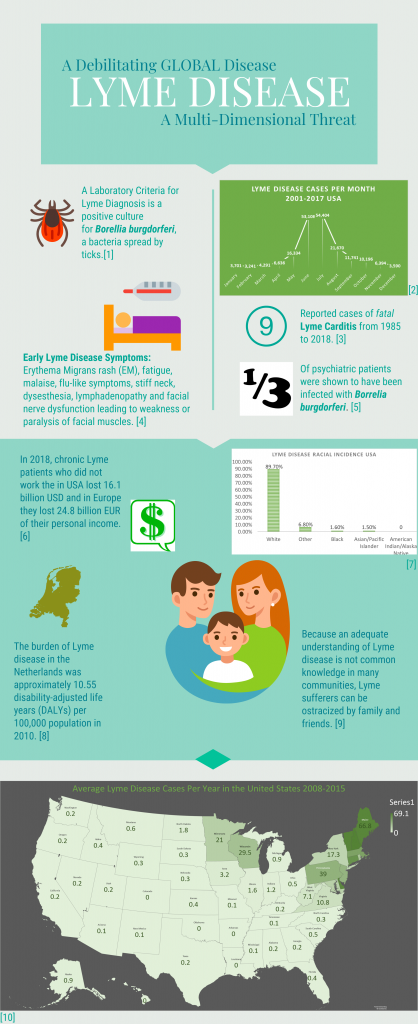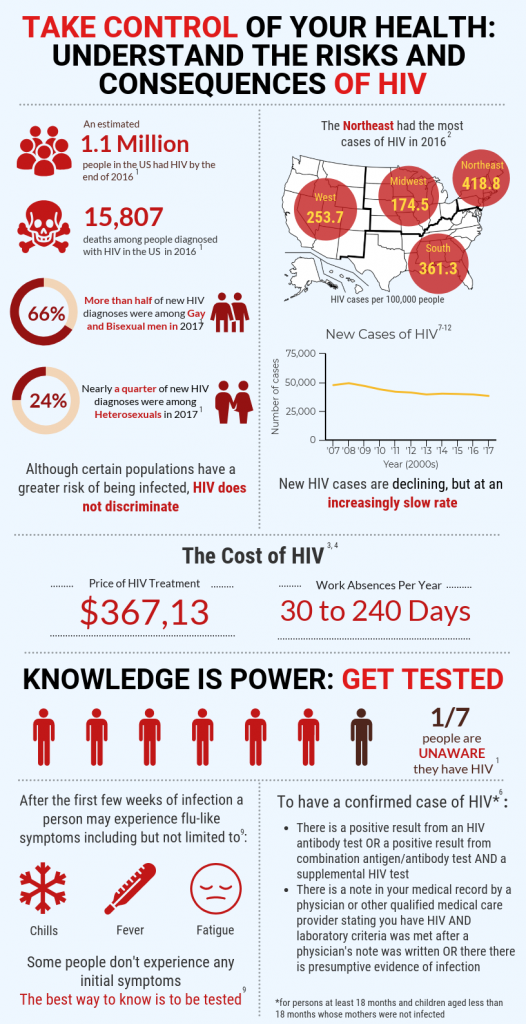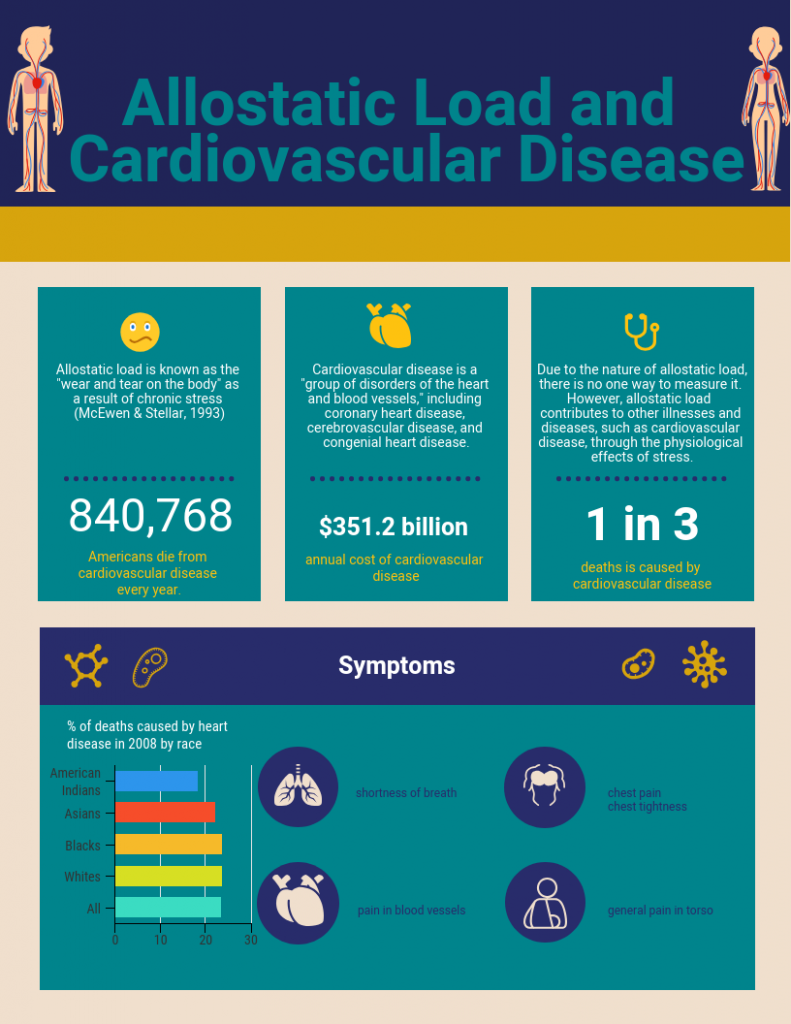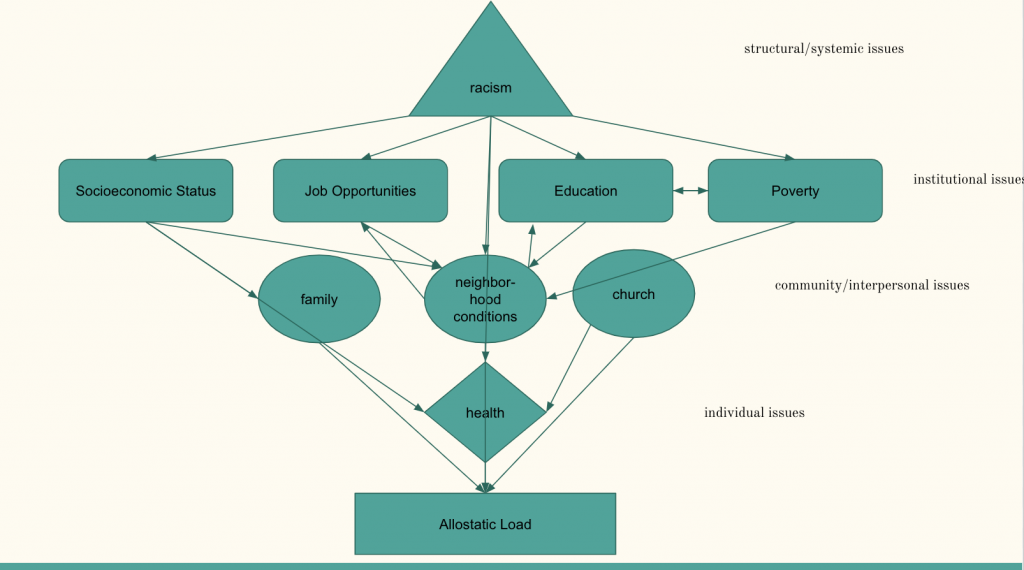References
CDC: Center for Disease Control and Prevention. (2017, November 28). Heart Disease Facts & Statistics. Retrieved June 26, 2019, from https://www.cdc.gov/heartdisease/facts.htm
McEwen, B. S., & Stellar, E. (1993). Stress and the individual: mechanisms leading to disease. Archives of internal medicine, 153(18), 2093-2101.
Gustafsson, P. E., San Sebastian, M., Janlert, U., Theorell, T., Westerlund, H., & Hammarström, A. (2014). Life-course accumulation of neighborhood disadvantage and allostatic load: empirical integration of three social determinants of health frameworks. American journal of public health, 104(5), 904–910. doi:10.2105/AJPH.2013.301707
Logan, J. G., & Barksdale, D. J. (2008). Allostasis and allostatic load: expanding the discourse on stress and cardiovascular disease. Journal of clinical nursing, 17(7b), 201-208.
Webb, S. R., PA-C. (2019, February 19). AHA 2019 Heart Disease and Stroke Statistics. Retrieved June 26, 2019, from https://www.acc.org/latest-in-cardiology/ten-points-to-remember/2019/02/15/14/39/aha-2019-heart-disease-and-stroke-statistics




Recent Comments